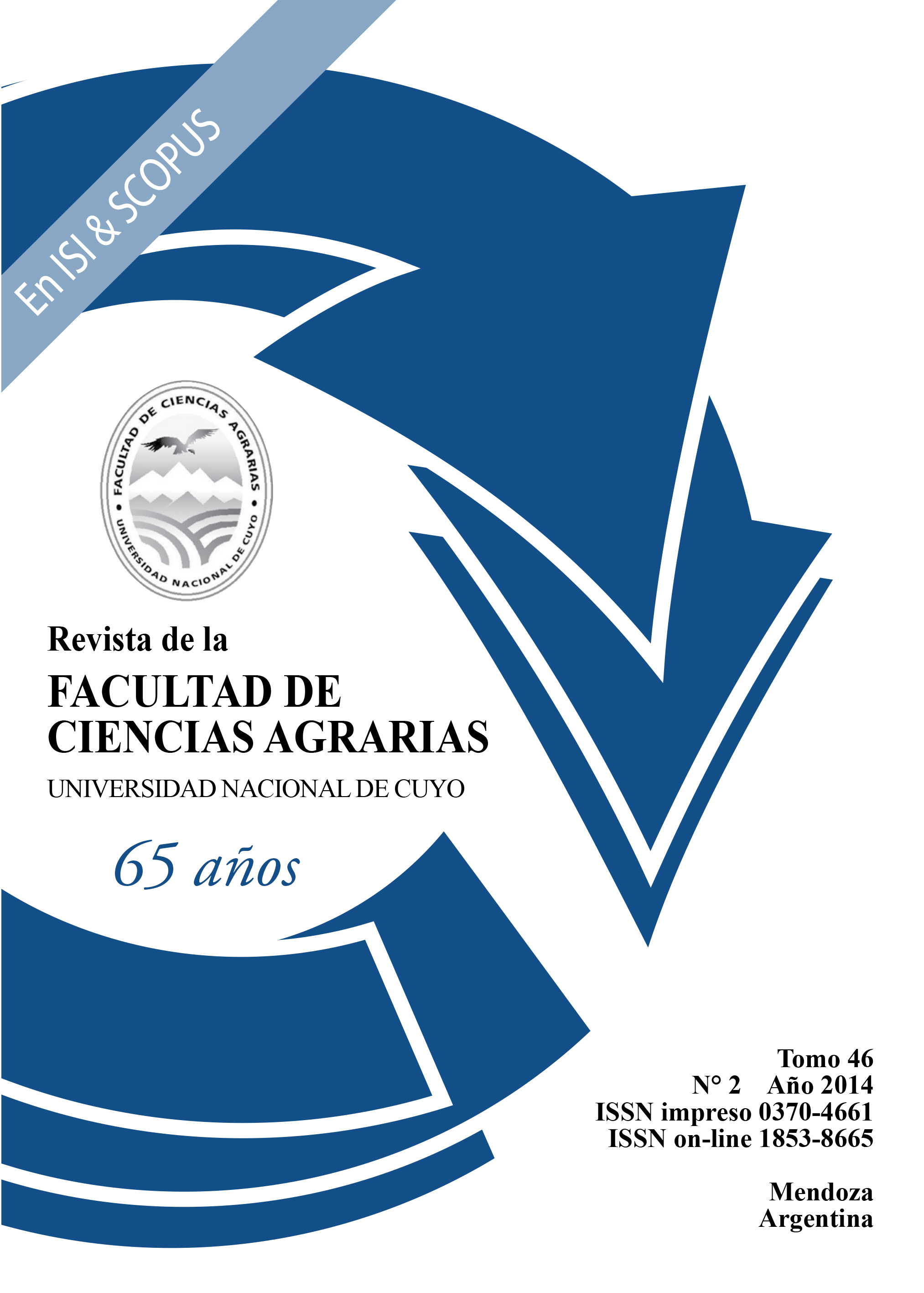Estimation of fecal coliforms contamination scenarios in a microbasin of the Rolling Pampa of Argentina by using a predictive model
Keywords:
biological contamination, water quality, modelingAbstract
Biological contamination dynamic was assessed in a microbasin of the Rolling Pampa of Argentina trough the study of the bacterial partition coefficient (BactKdQ) of SWAT model (Soil and Water Assessment Tool). Biological contamination sceneries were estimated for two stocking rates (0.5 and 1 Animal Units) using two values of BactKdQ: the value set by default in SWAT model (175 m3 Mg-1) and a real value measured in situ (10 m3 Mg-1). For the real scenery, a close relationship between rainfall and runoff events and biological contamination of water courses was confirmed. Real BactKdQ values, yet still low, significantly influenced the dynamics of transport of fecal coliforms. Therefore it is of interest to include parameters such as BactKdQ measured locally instead of those that the SWAT sets as default. In addition, we observed a high concentration of fecal coliforms in the microbasin, pointing it as an environment with high risk of biological contamination, since for this application of SWAT model all the guidelines were exceeded. This work highlights the importance of using computational models to support both production and environmental decisions.
Downloads
Published
Issue
Section
License

This work is licensed under a Creative Commons Attribution-NonCommercial-ShareAlike 3.0 Unported License.
Aquellos autores/as que tengan publicaciones con esta revista, aceptan las Políticas Editoriales.



